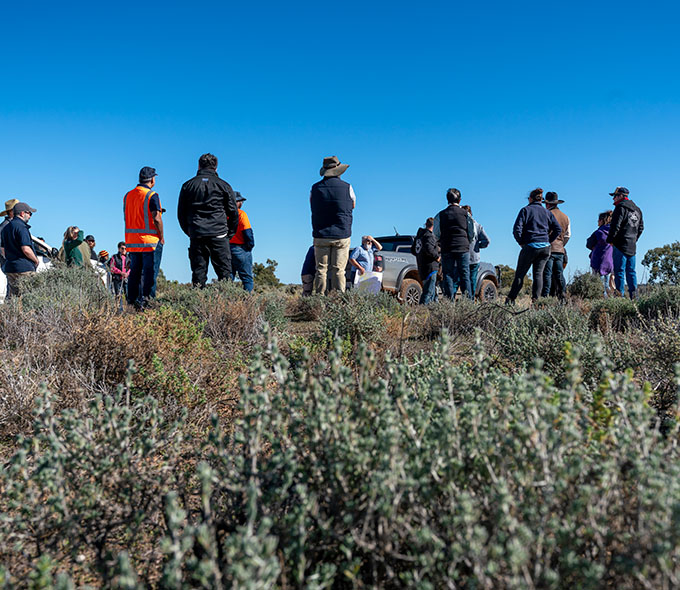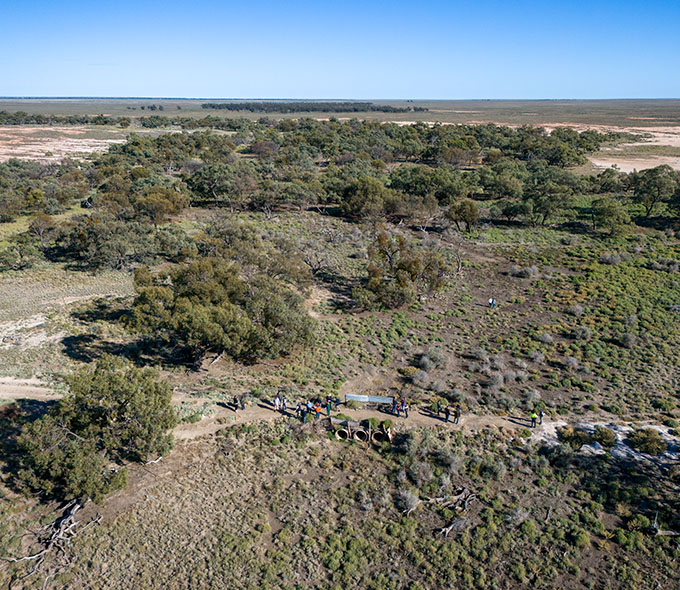Environmental watering in the lower Lachlan floodplain
The Lachlan Environmental Water Advisory Group visited the lower floodplain of Merrowie/Box Creek on 7 May 2024.
Landholders, Aboriginal community representatives from Wiradjuri, Yitha Yitha and Muthi Muthi, and stakeholders of the Great Cumbung Region Water Management Plan also joined the group to review the region's environmental water objectives and see the benefits of recent watering.
The delivery of water for the environment and natural floods have improved the condition of flood-dependent vegetation on the lower Lachlan floodplain. The department remains committed to consulting the group for guidance on prospective irrigation strategies throughout the valley. Our objective is to not only maintain but also enrich this ecosystem.

Visiting during a dry phase
The floodplain ecosystem of Merrowie is ephemeral, meaning it changes with wet and dry conditions. The wetting and drying phases are essential for the region's ecological characteristics. Too much or too little water would change these characteristics. River regulation has altered the timing and duration of natural flow events in the regulated Lachlan area. Water for the environment helps plants and animals survive between periods of inundation.
The group visited the area during a drying phase to observe the benefits of recent environmental watering, especially for lignum. Lignum is a shrub that provides habitat for various species in dry and wet conditions. Landholders have reported that lignum is reappearing in areas where it has not been seen for years. During dry times, small bush birds use lignum for nesting, feeding, or hiding from predators. In wet times, waterbird species like ibis use the lignum to create platforms for nesting.
The University of Canberra, in collaboration with us and landholders, used the field trip to select monitoring plots for an upcoming program. This program will monitor lignum condition change over time as a response to environmental watering. This is a crucial step in the ongoing efforts to improve the condition of this plant species. The data collected will play a vital role in informing future watering decisions and ensuring the continued health of the ecosystem.


